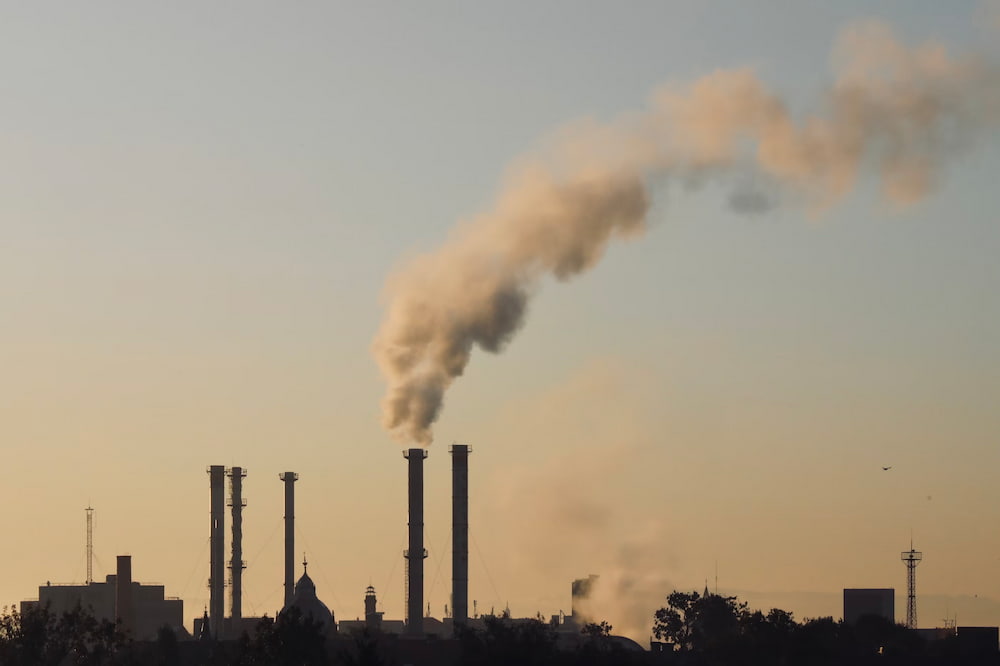The Paris Agreement states we need to work to limit the increase in global average temperature to 1.5°C. To meet this goal, we need to reach Net Zero by 2050 and reduce global emissions by 45% by 2030.
Carbon neutral and net zero goals are key to fighting against climate change and meeting global targets. But what exactly does carbon neutral mean? Are carbon neutral and net zero the same, or is there a difference between carbon neutral and net zero? Find out here.
What is Carbon Neutrality?
Carbon neutrality refers to the balancing of CO2 emissions with the same amount of carbon offsetting – to make the net carbon emissions zero.
There are various methods used to work to achieve this balance. Of course, the most effective – and healthiest – way would be to not emit any more CO2 that can be absorbed naturally.
However, drastic changes on a global scale would be needed to limit CO2 emissions to the extent that the world’s forests and plants can absorb excess emissions. Plants and forest areas act as carbon sinks, taking in CO2 from the atmosphere and converting it to oxygen. This, in turn, reduces emissions.
In supply chains, the aim is to offset emissions through projects – even outside the direct company’s operations. Companies can achieve carbon neutrality by measuring emissions and offsetting by projects such as renewable energy or contributing to reforestation.
Carbon neutrality is the balance between carbon emissions and carbon offsetting.
What is Net Zero?
Net zero is the goal of reducing all greenhouse gas emissions to zero – or as close to zero as we can. Greenhouse gases (GHGs) may include CO2, methane, fluorinated gases and nitrous oxide.
This concept is key to fighting climate change – it is a must in order to address global warming. Achieving net zero involves reducing emissions by at least 90%, according to the Science Based Targets Initiative standard.
Countries all around the world have set net-zero targets for 2050. The Paris Agreement urges the world to reach net zero emissions in order to limit the rise of global warming to 1.5C (above pre-industrial levels).
Companies wanting to achieve net zero will need to reduce emissions through the use of renewable energy and improve efficiency throughout supply chains instead of simply focusing on offsetting.
Net zero is the reduction of all greenhouse gas emissions, aiming for as close to zero as possible.
Key Differences
Carbon neutrality and net zero are both key actions in the fight against climate change, but they have some differences. The main difference between the two is that carbon neutrality accounts for CO2 emissions, but net zero covers all greenhouse gases.
This means that if a company is aiming for carbon neutrality, it will aim to reduce carbon emissions. If a company is aiming for net zero, then it will reduce greenhouse gas emissions across the entire supply chain. Let’s explore this in more detail:
Complexity
In order to achieve net zero, companies need to significantly reduce greenhouse gas emissions – whilst offsetting inevitable residual emissions. To achieve net zero by 2050, yearly clean energy investments will need to triple to $4 trillion by 2030. Net zero is a long-term strategy, focusing on the whole value chain.
Companies focusing on carbon neutrality, however, focus on offsetting. To become carbon neutral, companies have to calculate their carbon footprint, make efforts to significantly reduce emissions, and then work to balance the remaining emissions.
Reduction vs Offsetting
Reduction is when organisations directly reduce greenhouse gas emissions by boosting efficiency. Carbon offsetting, however, is when companies get credit for projects that help reduce emissions. It’s a trade-off, not a direct reduction.
Net zero is generally more difficult to achieve – businesses need to make systemic changes across entire processes in order to work towards net zero emissions.
Similarities
We’ve explored the differences between carbon neutral and net zero, but what do they have in common? Both carbon neutral and net zero share the same ultimate goal and encourage sustainable practices. Let’s explore this further:
The Same Goal
Both net zero and carbon neutrality share the goal of mitigating climate change. They both work towards balancing the release of greenhouse gases, aiming for a state of balanced emissions (emissions being equal to offset).
The ultimate goals of net zero and carbon neutrality are to:
- Balance greenhouse gases emitted with the amount offset/ removed
- Mitigate climate change
- Limit the rise of global warming
These goals are part of broader international strategies, such as those outlined in the Paris Agreement.
Encourage Sustainable Practices
Although the methodology may differ, both concepts promote sustainable practices in order to reduce greenhouse gas emissions. For example, both encourage organisations and supply chains to improve energy efficiency and switch from traditional fossil fuels to renewable energy sources.
There are many sub-works categorised as decarbonisation and retrofit projects, including:
- Building retrofits
- Renewable energy installations
- Transportation projects
- Smart energy systems
- Heat decarbonisation
In the public sector, decarbonisation helps to achieve carbon neutrality and reduce emissions. This scheme provides grant funding to public sector bodies to boost energy efficiency, providing £1.425 billion in grants until 2026. This means that public sector bodies can afford to undertake green projects to achieve carbon neutrality.
The Low Carbon Concrete Routemap is a great example of how the construction sector is aiming to reduce emissions and achieve carbon neutrality. The production of concrete is responsible for around 7-8% of global CO2 emissions, making concrete one of the largest sources of emissions.
It is predicted that Carbon Capture, Use or Storage (CCUS) technology will help deliver 61% of the carbon savings needed for the concrete/ cement industry to achieve net zero.
Measurement and Accountability
Net zero and carbon neutrality both require organisations to measure and account for all emissions. This involves tracking emissions across various scopes – for example:
- Scope 1 – Direct emissions
- Scope 2 – Indirect emissions from purchased energy
- Scope 3 – Other indirect emissions
Net zero often covers all material scope 3 emissions. Although both require comprehensive measurement, the time frame differs. Carbon neutrality is something that organisations can achieve in the short-term, whereas net zero is a longer-term goal, with more short-term milestones until the final target of 0 emissions is reached.
Carbon Neutral and Net Zero Regulations
Regulations and standards are constantly evolving in order to support global and national goals regarding carbon neutrality and net zero.
The goal to achieve net zero emissions by 2050 is a legally binding target in the UK. This was made through The Climate Change Act 2008 (2050 Target Amendment) Order 2019 and The Net Zero Strategy.
As per the Common Assessment Standard, there are two main environmental management system (EMS) standards for organisations:
- ISO 14001
- EMAS
ISO 14001 focuses on implementing environmental management systems to improve energy efficiency. EMAS incorporates these same requirements but has a stricter interpretation. In order to achieve ISO 14001 certification, organisations need an Environmental Management Policy. This policy should be documented and accessible to interested parties.
How Contractors Can Minimise CO2 Emissions
Contractors play a key role in reducing carbon emissions across various industries within the built environment sector and can significantly minimise their CO2 emissions to help reach net zero by 2050.
By prioritising locally sourced materials and equipment, contractors can reduce transportation-related emissions and support their local economies. As of September 2022, the UK’s built environment is responsible for 25% of the UK’s greenhouse gas emissions. By optimising transportation routes and investing in electric or hybrid vehicles, contractors can aid in reducing these greenhouse gas emissions.
Furthermore, it’s becoming more apparent than ever that implementing waste reduction strategies is essential. Construction, demolition and excavation, within the UK, account for 60% of material use and waste generation. By adopting the appropriate sustainable strategy – i.e reducing, reusing, recycling and ensuring proper waste disposal – contractors can promote a more sustainable built environment.
Decarbonisation and Retrofit Framework at Procure Partnerships Framework
If you’re a public sector organisation and want to achieve your net zero targets and meet objectives for long-term sustainability, Procure Partnerships Framework can help.
Our Decarbonisation and Retrofit Framework has helped many public sector bodies achieve their sustainability and carbon reduction goals, aligning with the UK’s goal to achieve net zero by 2050.
This framework covers a range of decarbonisation and retrofit works, from building retrofits to smart energy systems. From choosing the most suitable procurement route to monitoring project delivery, our framework gives you the guidance and assurance you need.
If you’ve been awarded funding during the Phase 3 grant of the Public Sector Decarbonisation Scheme, we can provide you with advice on how you can use it. Likewise, if you need support with your decarbonisation goals, we are on hand to support you.



